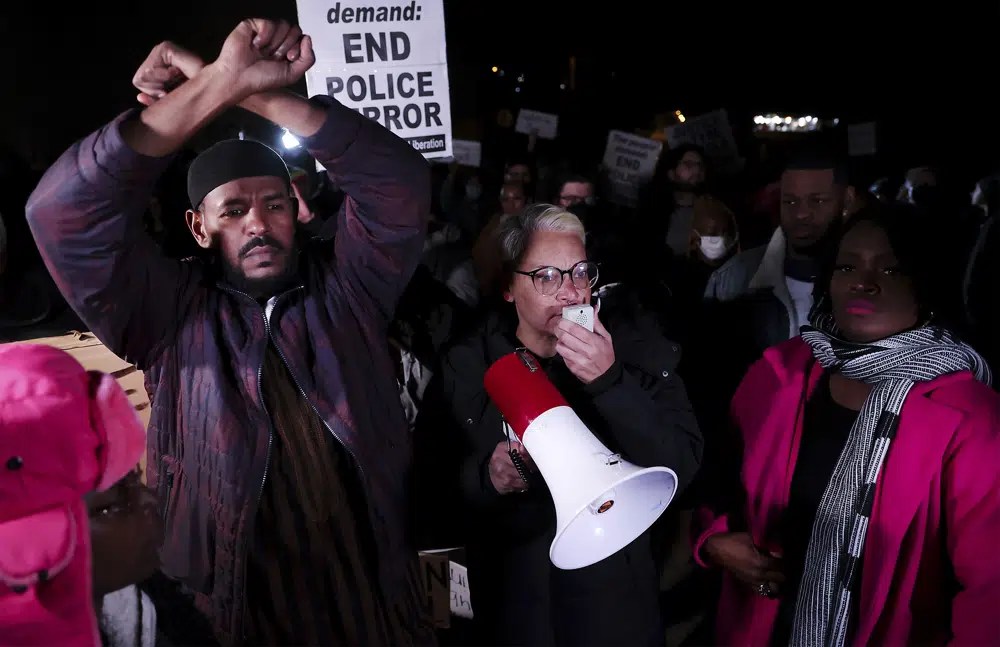Memphis beating video puts spotlight on first police account
Newly released video shows Memphis police officers battering motorist Tyre Nichols with punches and kicks and also using pepper spray and a The post Memphis beating video puts spotlight on first police account appeared first on TheGrio.

The initial police account said Tyre Nichols was stopped for reckless driving when “a confrontation occurred” and he fled on foot
Newly released video shows Memphis police officers battering motorist Tyre Nichols with punches and kicks and also using pepper spray and a baton, with Nichols howling in pain as he tried to shield the blows.
Yet initially, in a statement posted on social media the day after the incident, Memphis police used vague language to describe the attack and said nothing to suggest the officers had acted with the callousness and violence captured by the video clips made public late Friday.
It’s the latest example in a long string of early police accounts regarding use of force that were later shown to have minimized or ignored violent and sometimes deadly encounters, including the account given by Minneapolis police after George Floyd’s killing in 2020.

In its first comment on the arrest the night of Jan. 7 of Nichols, a 29-year-old FedEx worker, by members of the city police’s so-called Scorpion unit, the department said vaguely that the officers involved had been “routinely relieved of duty” during an investigation and an outside agency had been brought in.
As Nichols was dying in a hospital, the official police account said he had been stopped for reckless driving when “a confrontation occurred” and he fled on foot. He was nearly home after having taken sunset photos at a park.
“While attempting to take the suspect into custody, another confrontation occurred; however, the suspect was ultimately apprehended,” police said Jan. 8. ”Afterward, the suspect complained of having a shortness of breath, at which time an ambulance was called to the scene. The suspect was transported to St. Francis Hospital in critical condition.”
No mention was made of punches, kicks, pepper spray or baton strikes.
Police departments could increase trust among the public by being more transparent and forthcoming with initial statements about such encounters, Case Western Reserve Law School professor Ayesha Bell Hardaway said.
“It’s misleading,” Bell Hardaway said regarding the first police statement about the Nichols arrest. “It rings of a regular traffic stop, when in fact we know that these were not officers on patrol looking for speeding.”
“I wonder what prompted them to call out this incident and to acknowledge it at all,” Bell Hardaway said.
Asked about that initial statement, Memphis police spokeswoman Maj. Karen Rudolph on Saturday said only that like “all information that is released, it is preliminary.”
Nichols and the five officers, who have been charged with murder and fired from the department, are all Black.
It’s common for police agencies to issue information on an incident with very little description when they lack complete details, often just “information that is so generic that it is effectively unhelpful,” said University of South Carolina law professor Seth Stoughton, a former police officer.
“I don’t actually think that’s a huge problem, so long as there is a detailed follow-up,” Stoughton said. “Agencies need to be attuned to the potential of lies by omission. Or deception, let’s not say lies, or being misleading by omission.”
Civil rights lawyer Michael Avery, a founder of the National Police Accountability Project, said police and elected officials can have a stake in downplaying officers’ misconduct.
“They don’t want to acknowledge that these things are happening, particularly not in their town or on their watch,” Avery said. “I would say there’s a predisposition toward deniability.”
He said the use of passive tense in the initial Memphis police statement — that confrontations had occurred — disguised what really happened.
“It’s also not true,” Avery said. “He complained of shortness of breath? When you watch the video, he’s lying there either unconscious or semi-conscious. To describe that as a complaint about shortness of breath is ridiculous.”

Nichols died Jan. 10. In announcing his death the following day, the Tennessee Bureau of Investigation said he had “succumbed to his injuries” but did not describe their nature.
Only three days later, on Jan. 14, did the public learn that Nichols suffered cardiac arrest and kidney failure after being beaten by police, when his stepfather told local media. More recently, lawyers for Nichols’ family have said an autopsy conducted by a forensic pathologist they hired found extensive internal bleeding.
The reference to breathing problems was reminiscent of Floyd’s 2020 death after a Minneapolis police officer knelt on the back of his neck for minutes as he lay face-down on the street and repeatedly cried out, “I can’t breathe.” Police there initially said publicly that Floyd died of a “medical incident during a police interaction.”
The Minneapolis Police spokesperson who issued that statement later said that he had not visited the scene or reviewed body camera footage, and that once bystander video surfaced and outside agencies were brought in, he was unable to issue a corrected statement.
Publicly released videos have also contradicted police accounts elsewhere, such as in Buffalo, New York, where officers said a protester struck his head when he “tripped and fell” but video showed he had been shoved by two officers.
In Philadelphia, officers said a college student who suffered a serious head wound from a metal police baton had assaulted an officer. But the student was released after prosecutors saw a video showing an officer striking him on the head and neck with the baton.
TheGrio is FREE on your TV via Apple TV, Amazon Fire, Roku and Android TV. Also, please download theGrio mobile apps today!
The post Memphis beating video puts spotlight on first police account appeared first on TheGrio.












